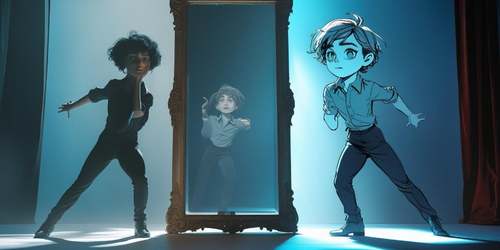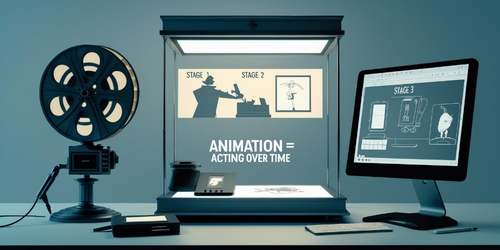Wait—Why Acting?
If you’re learning animation, it might surprise you to hear that acting is one of the most important skills you can build. No, you don’t need to be the next Oscar winner, but you do need to *think* like an actor. Why? Because animation is acting—just one frame at a time. Every movement you draw or rig is a performance.
When a character raises an eyebrow, slouches their shoulders, or takes a beat before delivering a line, it’s all acting. And whether you’re animating a pencil sketch or working in 3D, the same rules apply. The better you understand character motivation, emotion, and timing, the more believable your animation will feel.

The History of Acting in Animation
This idea isn’t new. Walt Disney himself was obsessed with acting. Back in the 1930s and 40s, Disney animators studied live-action reference footage—sometimes even acting out scenes themselves—to capture authentic performances. This approach helped bring characters like Snow White and Pinocchio to life with emotional depth never seen before in cartoons.
Fast-forward to the 1990s, and studios like Pixar and DreamWorks doubled down. Glen Keane, the legendary Disney animator behind characters like Ariel and the Beast, often filmed himself acting out scenes. He once said, “You have to feel it in your own body to draw it truthfully.” This principle became standard practice at Disney and other major studios—and it still is today.
Pop Culture Proof
You don’t have to look far to see how powerful acting is in animation. Think about:
- Gollum in *The Lord of the Rings*, where Andy Serkis’s performance was directly translated into CG
- Spider-Verse’s emotional beats, where even the smallest pauses and reactions are expertly timed
- *Avatar: The Last Airbender*, where voice and body language together create nuanced characters
Whether it’s hand-drawn or motion capture, all great animated performances are rooted in strong acting choices. These moments resonate with audiences because they feel *real*, even when the characters are stylized or fantastical.

How Beginners Can Practice Acting
Don’t worry—you don’t need to take center stage at your local theater. Here are beginner-friendly ways to get started:
- Act out scenes in the mirror to explore how your face and body express emotion
- Record yourself reading lines and watch your timing, rhythm, and movement
- Analyze scenes from your favorite animated shows—what makes the emotion land?
- Try thumbnailing out an emotional beat, focusing on the key poses
The goal isn’t to be perfect—it’s to *understand performance*. That understanding will make your animation stronger, more expressive, and more human.
Animation Is a Performance Art
At its heart, animation is just silent acting with pencils, pixels, or puppets. When we animate, we’re asking the audience to believe that something unreal is alive—and the key to doing that is empathy. That’s what acting teaches you.
Even animators working on simple motion graphics or explainer videos can benefit from this mindset. A well-timed gesture or a tiny pause can completely change how something feels.
Want to keep learning? Here’s something worth checking out:
Final Thoughts
So yes, really—animators *do* need to study acting. It’s the secret sauce behind every expressive character, every heartfelt scene, and every laugh-out-loud moment in animation history. You don’t need to be dramatic—just observant, curious, and willing to embody your characters. Because when you do, your audience will feel it.




























